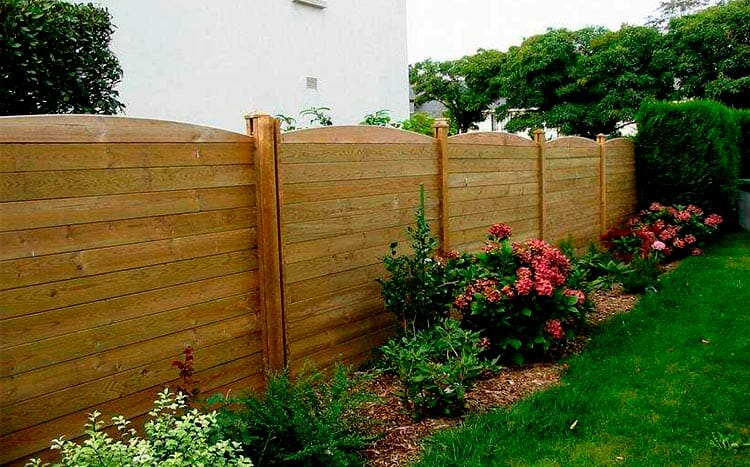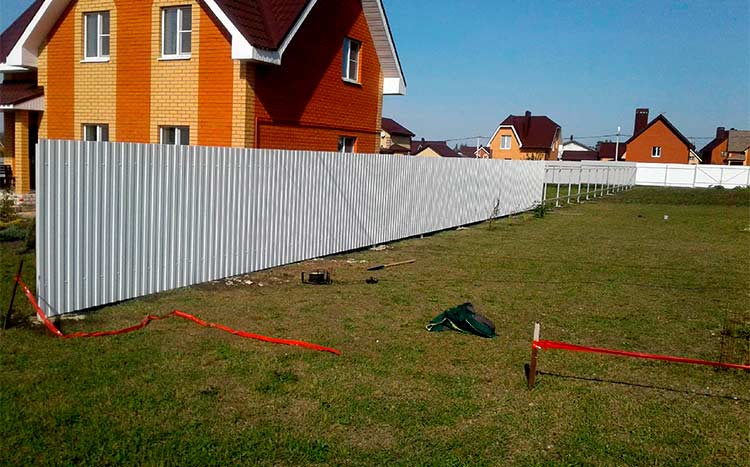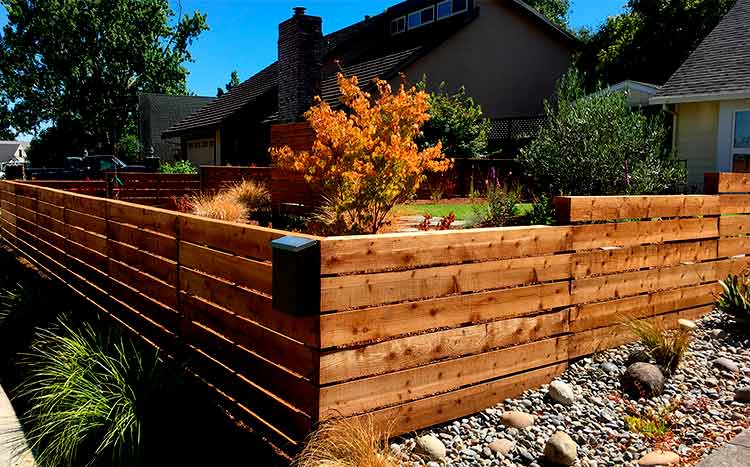In the United States, a significant number of disagreements related to real estate focus on issues regarding the demarcation of property boundaries and fences. Particularly in Vermont, the question arises about who has ownership of a fence located on the property’s edge, or who has the right to build a fence that marks the boundary.
Vermont’s boundary fence laws define what a “sufficient boundary fence” is and how it is shared by adjoining landowners or neighbors. Owing to the state’s rich agricultural roots, this decades-old law states that such a fence should be 4.5 feet tall, well-maintained, and built to prevent the escape of sheep. Landowners have an obligation to share the costs of erecting a boundary fence under the law.
While these state-level property-line codes or laws may have an agricultural tone, they can be used in a dispute regarding property line fences and trespassing across the green mountain state. At the same time, local governments in cities and counties have additional ordinances that touch on fences.

What we cover
ToggleDo I Need A Permit to Build A Fence in Vermont?
Yes, you may need to apply for a permit to build a fence in Vermont depending on your location and local building or zoning laws. Local governments at the municipal or county level usually have additional building codes to complement state laws.
Among the major counties and cities where permits are needed to build a fence include:
- Burlington- Burlington residents require a fence permit from the city’s planning and zoning department and a building permit from the Department of public works. Approval takes between 3 to 4 weeks depending on the time of year
- Montpelier, VT- Zoning permits are required to erect fences except for those used for agricultural purposes.
- Stowe- A special zoning permit is required for fences taller than 8 Feet
However, there are places in Vermont where you do not need any permit to build a fence. An example is Rutland City where residents can build fences on residential lots without a permit. However, adherence to local zoning and building codes is expected and fences will be inspected by the relevant city authorities.
Can I Replace an Existing Fence Without A Permit?
You cannot replace or alter a fence without a permit. Tearing down an existing fence and replacing it could mean changing its structure, positioning, or materials used that must be subjected to the normal approval process. Most cities and counties with permit requirements have clauses in their building or zoning ordinances to this effect.
That said, you might be exempted from permit application if you are replacing a permitted fence with a new one of the exact specifications. For instance, residents of Burlington, VT can replace a fence with a similar fence without applying for a new permit according to the city’s zoning guidelines.
Tip: It is always advisable to seek advice or clarification from the relevant local government department before doing any structural adjustments on your property. This way, you can be sure that the work being done complies with local laws. Licensed contractors within your locality can also offer good advice and guidance on permits and building/zoning codes.
How Tall Can A Privacy Fence Be in Vermont?
There are fence height limitations across the state of Vermont enforced by local zoning or building departments at municipal and county levels. The state fence code specifies a sufficient fence to be at least 4.5 feet tall but this is aimed at farmers enclosing livestock. Residential and commercial district landowners should refer to local ordinances for fence height limitations.
On average, fences cannot be taller than 4 feet in the front yard especially those on the street side, and 6 feet in the rear and side yards based on local fence laws across Vermont. Additional restrictions based on the position and type of fence may apply.
For instance, fences in Burlington should not be taller than 4 feet in front yards for fences with at least 80% open space, 3 Feet for front yard fences with less than 80% open space, and 6 Feet for fences in rear and side yards.
Some towns and counties in Vermont do not have fence height restrictions. However, you should be mindful of your neighbors and only erect fences that are sufficiently tall to serve their intended purpose. Avoid erecting fences that block views or direct sunlight to neighboring houses especially in residential areas to avoid disputes or private nuisance claims from neighbors.
Who Owns the Fence on Property Lines In VT?
Landowners in Vermont are expected to jointly erect equal portions of a boundary fence and maintain their portion of the fence. While the law does not expressly state that one gets sole ownership of their portion, it is assumed in most places that the boundary fences are shared between neighbors and none of them can claim sole ownership.
Disputes arising from the ownership of property line fences or the position of the boundary can be resolved by a locally appointed fence viewer. Landowners can also opt to enter into a property line agreement that defines how the boundary line or dividing fence is utilized. These agreements are recognized by law and can help you avoid disputes with neighbors.
How Do You Know Where the Property Boundary Is?
There are several ways to identify the property line on private lots in Vermont. The first and easiest option is to locate physical permanent markers placed on your lot when it was originally subdivided. If they do not exist or are not accessible, you can also check the drawing on your land deed or title.
A more reliable option is to survey your land with the help of a licensed surveyor in Vermont. Some local government websites have a list of licensed surveyors that can be accessed online or physically at the relevant department in your zip code. The surveyor will do physical measurements of your land and refer to existing plat maps to identify the correct boundary.

Can My Neighbor Build A Fence On The Property Line?
There are no setback requirements across the state of Vermont on private property line fences unless the boundary is dividing a private lot from a public right-of-way utility. Generally, neighbors are free to erect a fence on the property line. That said, neighbors must build and maintain equal portions of a property line fence according to Vermont fence laws.
Can I Put Up A Fence on My Side of The Property Line?
You are allowed to build and maintain your portion of the dividing fence according to the state’s fence laws. However, additional setback requirements exist where the property line is dividing your lot from a public lot or right-of-way utility like a street. It is also advisable to enter into a property line agreement with your neighbors to avoid disputes arising from such fences.
What Is A Spite Fence?
A spite fence according to Vermont fence laws is an unnecessary fence built by a landowner to annoy a neighbor, deny them rights to air or light or block their view. Such fences could be unnecessarily tall, opaque, and wrongly positioned. Spite fences are illegal in Vermont and landowners can be fined up to $100 in addition to being compelled to demolish them if discovered.
Vermont Boundary Fence Laws at A Glance
| Statues | Boundary Fences | Spite Fences |
|---|---|---|
| Boundary fences: 24 V.S.A. 3801, 24 V.S.A 3802, and 24 V.S.A 3805 Spite fences: 24 V.S.A. 3817 | A “sufficient fence” as defined by Vermont law is 4.5 feet tall, in good repair, and “so constructed as to prevent the escape of sheep”. Owners or occupants of adjoining lands must make and maintain equal portions of the division fence between their lands. If a dividing land between properties can’t be determined or agreed upon by neighbors, either party can apply to the fence viewer to resolve the dispute. | It’s illegal for a Vermont resident to erect an “unnecessary fence” or other structure for the purpose of annoying a neighbor, obstructing their view, or denying them light or air. A person who violates this statute can’t be fined in excess of 100$. |
FAQ's
What If A New Fence Is Blocking My View?
Such a fence could be considered a spite fence, illegal or unnecessary according to the state of Vermont’s fence laws. Report the owner to the relevant authorities in your area or have a fence viewer from your local building code office inspect it.
Can I Paint My Side of The Fence?
Your neighbor is not allowed to hang things on your side of the fence in Vermont. This can be taken as trespass or a private nuisance and a complaint to this effect can be raised. Talk to your neighbors about it or raise a complaint if you do not agree.
Can I Build A Fence Next to My Neighbor’s Fence?
You are allowed to erect a fence next to your neighbor’s fence provided you adhere to local fence setback guidelines and get a permit where it is required. However, it is advisable, especially for fences used for agricultural purposes to agree with your neighbor and erect a single dividing fence.
Can My Neighbor Stop Me from Putting Up A Fence?
There is no law or building code in Vermont allowing neighbors to block you from erecting a fence on your land. However, they can raise a complaint or notify the authorities if the fence does not meet local fence standards or if it fits the description of an illegal spite fence.













